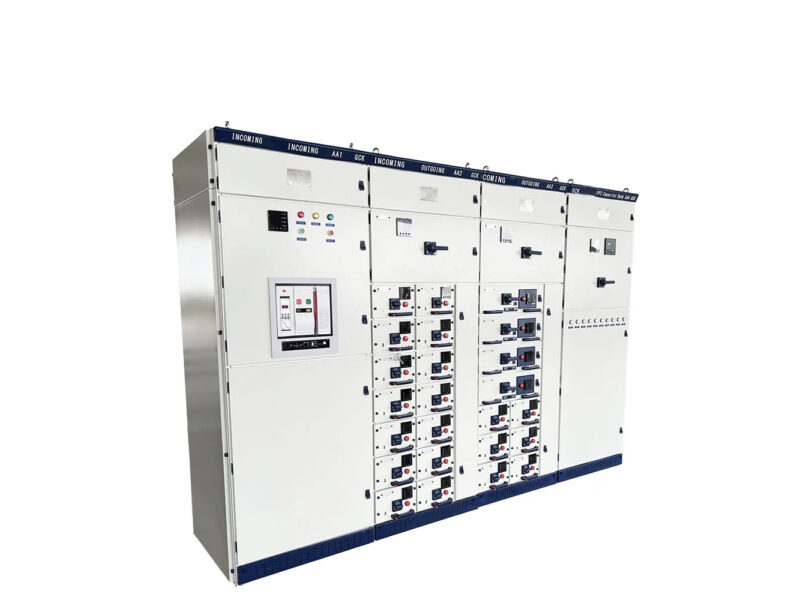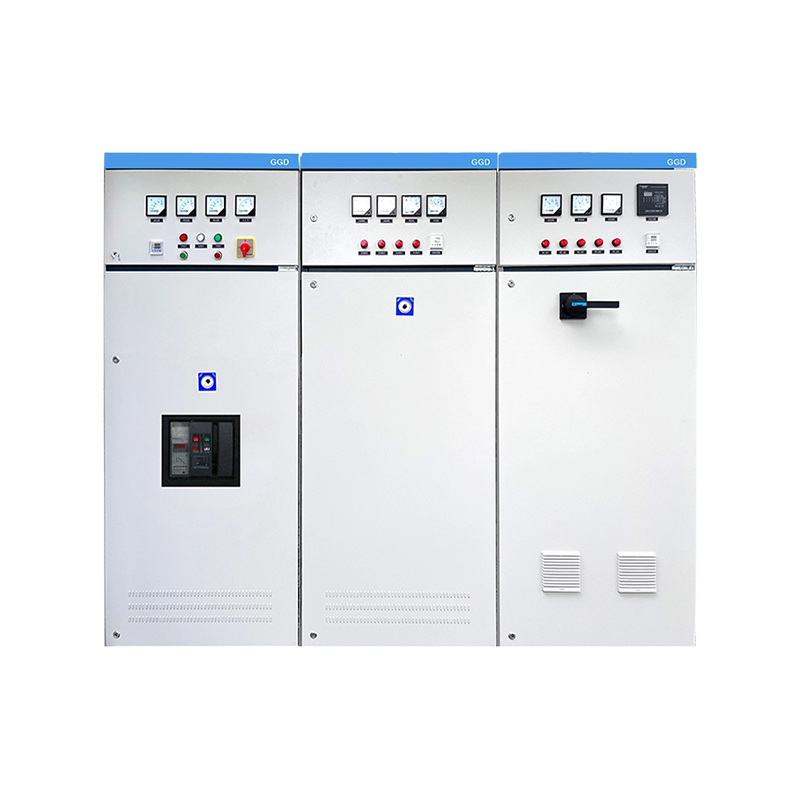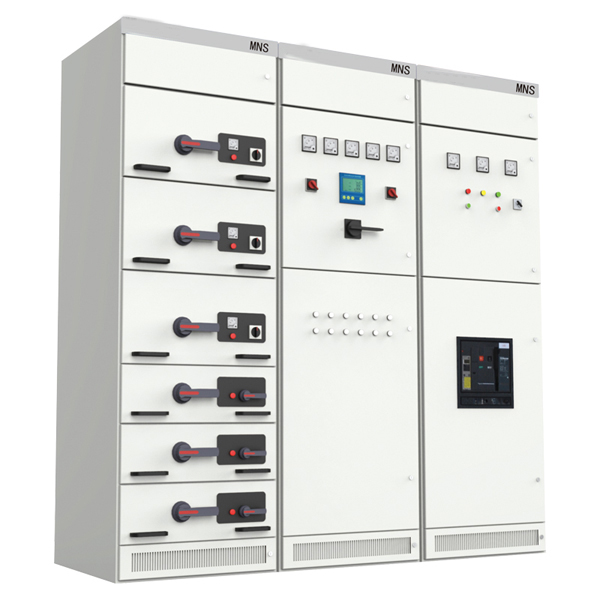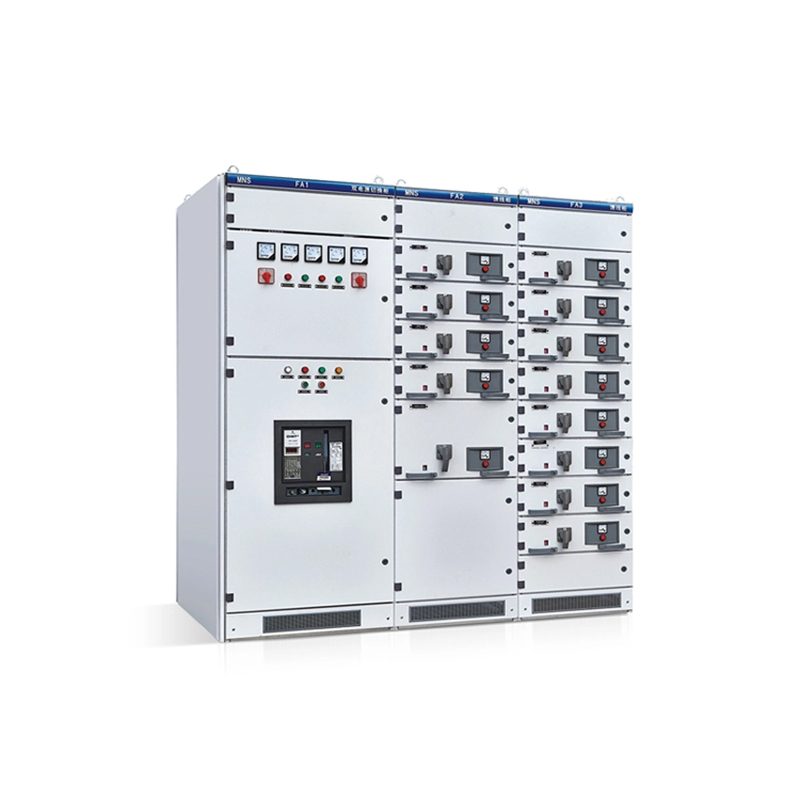
Low-voltage switchgear is widely used in industrial, commercial, and residential power systems for power distribution, control, protection, and monitoring. Below is a comparison of common low-voltage switchgear models, their meanings, and their advantages and disadvantages to help select the most suitable product.
1. GGD Low-Voltage Fixed Switchgear
Model Meaning
-
G – Cabinet-type (Switchgear)
-
G – Fixed type (Equipment is fixed, components are not removable)
-
D – Low-voltage power equipment
Advantages
-
Simple structure, low manufacturing cost, and relatively affordable
-
Easy to install and maintain, suitable for fixed equipment without frequent component replacement
-
Suitable for power distribution systems such as substations and industrial enterprises
Disadvantages
-
No withdrawable function units, requiring power shutdown for maintenance
-
Poor expandability, not suitable for frequently modified systems
-

GGD Low-voltage fixed switchgear
2. GCK Low-Voltage Withdrawable Switchgear
Model Meaning
-
G – Cabinet-type (Switchgear)
-
C – Withdrawable (Functional units can be removed for maintenance)
-
K – Control center (Suitable for motor control)
Advantages
-
Drawer-type design allows easy maintenance and component replacement
-
Suitable for motor control (MCC) and centralized management of multiple motors
-
Compact structure, space-saving
Disadvantages
-
Higher cost compared to fixed-type switchgear
-
Moderate structural strength, not suitable for high-current loads
-

Low-Voltage Switchboards
3. GCS Low-Voltage Withdrawable Switchgear
Model Meaning
-
G – Cabinet-type (Switchgear)
-
C – Withdrawable (Functional units can be removed for maintenance)
-
S – Standardized design (Optimized structure compared to GCK)
Advantages
-
Modular design with good expandability, adaptable to various needs
-
Higher breaking capacity, suitable for high-current loads
-
Easy maintenance with withdrawable functional units
Disadvantages
-
Higher price, mainly used in large industrial projects
-
Relatively large space occupancy, not suitable for small electrical rooms
4. MNS Low-Voltage Withdrawable Switchgear
Model Meaning
-
MNS – Developed by ABB, an internationally standardized withdrawable low-voltage switchgear
Advantages
-
Modular and compact design, reasonable structure, space-saving
-
High reliability and protection level (IP30~IP54), suitable for harsh environments
-
High rated current (≤6300A), suitable for high-power applications
Disadvantages
-
Expensive, costing more than GCS and GCK
-
Requires skilled professionals for installation and maintenance
-

Low voltage switchgear gck
5. GGJ Low-Voltage Reactive Power Compensation Cabinet
Model Meaning
-
G – Distribution cabinet
-
G – Reactive power compensation
-
J – Energy-saving type
Advantages
-
Improves power factor and reduces energy losses
-
Energy-efficient, reducing electricity costs
-
Simple structure, easy to install and maintain
Disadvantages
-
Only used for reactive power compensation, not for general power distribution
-
Requires proper configuration based on load conditions; improper settings may be ineffective
6. XL-21 Low-Voltage Power Distribution Cabinet
Model Meaning
-
X – Box-type structure
-
L – Power cabinet
-
21 – Design serial number
Advantages
-
Simple structure, cost-effective, suitable for small power distribution systems
-
Easy installation, applicable for small buildings, factories, and residential areas
-
Customizable based on needs, highly flexible
Disadvantages
-
Limited current-carrying capacity (≤630A), not suitable for high-power systems
-
Poor expandability, unsuitable for future upgrades
Comparison of Low-Voltage Switchgear Models
| Model | Fixed/Withdrawable | Rated Voltage | Rated Current | Application | Advantages | Disadvantages |
|---|---|---|---|---|---|---|
| GGD | Fixed | 380V | ≤3150A | Substations, industrial enterprises, buildings | Cost-effective, easy maintenance | No withdrawable units, poor expandability |
| GCK | Withdrawable | 380V | ≤3200A | Industrial, mining, building power distribution | Compact, motor control application | High cost, limited application |
| GCS | Withdrawable | 380V | ≤4000A | Airports, data centers, subways | Modular design, high expandability | High price, large footprint |
| MNS | Withdrawable | 380V | ≤6300A | Oil, chemical, rail transit | High reliability, high protection level | Expensive, requires skilled installation |
| GGJ | Fixed | 380V | Reactive power compensation | Industrial enterprises, commercial buildings | Improves power factor, energy-saving | Only for reactive power compensation |
| XL-21 | Fixed | 380V | ≤630A | Small-scale power distribution | Cost-effective, easy installation | Limited current capacity, poor expandability |
How to Choose the Right Low-Voltage Switchgear?
-
For high loads and high reliability, choose MNS or GCS
-
For motor control centers (MCCs), choose GCK or MNS
-
For power distribution with a lower budget, choose GGD
-
For reactive power compensation, choose GGJ
-
For small-scale power distribution, choose XL-21
